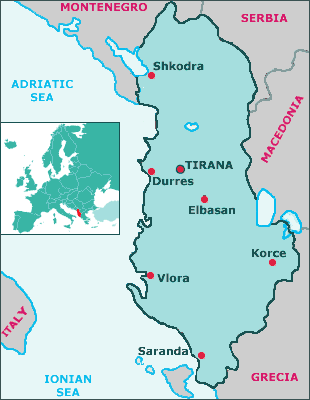Albania
In short

The Territory
History
Cities and places of interest
Other important cities are Durazzo, one of the most ancient places in Albania, which was the main port in Illyria; conquered by the Byzantines and later by the Turks, it maintains traces of all these different civilisations in its architecture.
For those who love the mountains the best destinations are Voskopoja, situated approximately 21 km from Korca on a plateau 1160 m. above sea level; Razma, a picturesque village approximately 41 km north of Scutari, the National Park of "Lugina and Valbones" and the Thethi National Park. Historic destinations are Butrint, whose ancient name was Buthrotum, a World Heritage Site, and the Museum-City of Gjirokastra in the valley of the Drinos river in the south of Albania, a rare well-preserved Ottoman town, which is also another UNESCO World Heritage Site, and the fortress of Kruja, which was built during the 6th century. Tourist destinations along the sea are Valona, Saranda and the Divjaka beach, with a 12 km long stretch of beautiful sandy beach.

